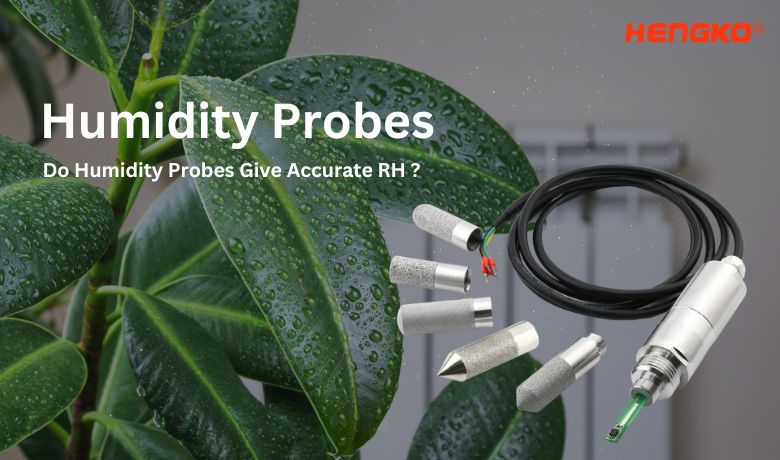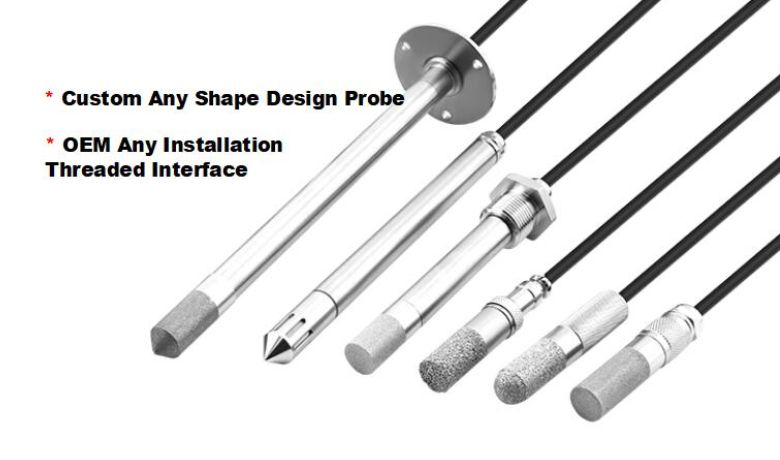
In my journey working with various weather instruments and systems, humidity probes have been a consistent part of my toolset. These devices, used to measure relative humidity, play an essential role in various sectors, from meteorology and HVAC systems to art preservation and agricultural applications. Relative humidity (RH), which denotes the amount of moisture present in the air compared to the maximum amount it could hold at a specific temperature, is a critical parameter in these fields. An accurate measurement can make all the difference in maintaining the right conditions for a process or even in predicting weather patterns.
The significance of RH readings has led me to spend a great deal of time studying and working with humidity probes. Throughout my experience, I've discovered that these devices, while highly sophisticated, are not always flawless in their readings. Much like any other measurement tool, they need careful handling, regular calibration, and a clear understanding of their principles and limitations. Join me as we delve into the world of humidity probes and discover how accurate they can be when it comes to measuring RH.
Understanding How Humidity Probes Work
In order to gauge the accuracy of humidity probes, I found it essential to understand the principles underlying their operation. Most humidity sensors use capacitive, resistive, or thermal conductivity techniques to detect changes in air humidity. Here, I'll primarily focus on capacitive probes, which are among the most widely used due to their excellent sensitivity, long-term stability, and resistance to pollutants.
A. Capacitive Humidity Sensors
Capacitive humidity sensors work by changing capacitance. These devices typically have a thin film polymer dielectric that absorbs or releases water vapor as the surrounding humidity changes. As the polymer absorbs water, it becomes more conductive and the sensor's capacitance increases, creating a measurable effect proportional to the relative humidity.
B. Sensitivity to Environmental Factors
While highly efficient, capacitive humidity sensors can be sensitive to temperature fluctuations. This is because the amount of water vapor that air can hold depends significantly on temperature - warmer air can hold more moisture. Therefore, many capacitive sensors come with inbuilt temperature sensors for compensation and more accurate readings.
C. Calibration for Accuracy
Calibration is a key aspect of maintaining the accuracy of humidity sensors. The process involves comparing and adjusting the device's readings to match those of a standard, known source of humidity. Regular calibration can help ensure that your humidity sensor provides accurate and reliable readings.
Factors Influencing the Accuracy of Humidity Probes
The accuracy of humidity probes isn't simply a matter of the device's design or quality - external factors can have a significant impact as well. It's important to be aware of these variables to understand and address potential inaccuracies in RH readings.
A. Temperature Fluctuations
As I mentioned earlier, temperature has a direct effect on the amount of water vapor air can hold at a given time, which means that changes in temperature can distort RH readings. This is why many humidity sensors come with integrated temperature sensors for compensation.
B. Atmospheric Pressure Changes
Changes in atmospheric pressure can also influence the accuracy of humidity readings. Higher pressure typically results in lower RH readings, while the opposite is true for lower pressure. Some advanced humidity probes have pressure compensation features to address this issue.
C. Contamination and Aging
Over time, dust, pollutants, and other contaminants can build up on the sensor, which can skew RH readings. Aging of the sensor element can also lead to drifts in measurement. Regular maintenance and calibration can help mitigate these issues.
D. Sensor Positioning
The location and positioning of the sensor can affect its readings. For instance, a sensor placed near a heat source may provide higher RH readings due to increased evaporation. It's crucial to position the sensor in a representative location of the environment you're monitoring.
E. Device Specifications
Finally, the specifications of the humidity probe itself can influence its accuracy. Factors such as resolution, precision, range, hysteresis, and response time can all affect the device's performance and the accuracy of its readings. It's important to select a device that matches the requirements of your specific application.

Importance of Regular Maintenance and Calibration for Accurate RH Readings
To ensure the ongoing accuracy of humidity probes, I can't stress enough the importance of regular maintenance and calibration. These procedures help to account for any drift in the readings due to aging or environmental influences.
A. Cleaning the Sensor
Routine cleaning of the humidity sensor can prevent the buildup of dust and other pollutants, which might otherwise skew RH readings. However, it's important to remember to use appropriate cleaning methods to avoid damaging the sensor.
B. Regular Calibration
Calibration ensures that the readings from a humidity probe accurately reflect the actual RH level. Calibration involves comparing the device's readings to a known standard under controlled conditions. Most manufacturers recommend calibrating humidity sensors annually, although the specific calibration frequency can depend on the probe's usage and the environment it's deployed in.
C. Replacement of Aged Sensors
Even with the best care, sensors can age and lose accuracy over time. Replacing aged sensors ensures that your humidity measurements remain reliable and accurate.
D. Dealing with Temperature Variations
Since temperature variations can affect RH measurements, many advanced humidity probes come with integrated temperature sensors. These can adjust RH readings based on the current temperature, providing a more accurate measurement.
V. How Accurate Can Humidity Probes Be?
Now that we've covered the operation of humidity probes and factors that can affect their accuracy, let's turn to the crucial question - just how accurate can these devices be?
A. Range of Accuracy
The accuracy of humidity probes can vary significantly, typically ranging from ±1% to ±5% RH. High-end probes tend to offer higher accuracy, often within ±2% RH.
B. Factors Influencing Accuracy
Numerous factors can influence a probe's accuracy, including sensor quality, maintenance and calibration, environmental conditions, and device specifications. Understanding these factors can help you choose the right humidity probe for your needs and maintain its accuracy.
C. Striving for Precision
While perfect accuracy may be unattainable, striving for precision - the consistency of your measurements - can improve the reliability of your RH data. Regular calibration and maintenance, using temperature compensation, and understanding the limits of your specific device can all contribute to more precise measurements.
D. Making the Right Choice
Choosing a humidity probe with the right specifications for your application is critical for getting accurate measurements. It's important to consider the device's RH range, resolution, response time, and the presence of compensation features for temperature and pressure.
E. Conclusion
While no device can guarantee 100% accuracy all the time, with the right choice, regular maintenance and calibration, and understanding of how environmental conditions might affect your readings, you can trust that your humidity probe will provide you with reliable, accurate RH data.
The Accuracy of Humidity Probes in Real-World Applications
Through real-world applications and case studies, we can gain a better understanding of the accuracy of humidity probes and how they perform under various conditions. I've gathered a few examples to illustrate the reliability and potential challenges of these devices.
A. Climate-Controlled Museums and Art Galleries
Museums and art galleries require precise climate control to preserve delicate artworks. At the Metropolitan Museum of Art in New York, for instance, RH probes play a crucial role in maintaining optimal conditions for the artworks. Through regular calibration and careful monitoring, the staff have reported consistent accuracy within ±2% RH, helping to preserve priceless pieces of art history.
B. Data Centers
In a data center, too much humidity can lead to condensation and corrosion of hardware, while too little can cause static electricity buildup. In a case study of Microsoft's data centers, the company reported using high-end humidity probes to maintain the RH within a safe range. They reported consistent accuracy within the manufacturer's stated range, provided the probes were regularly maintained and calibrated.
C. Industrial Drying Processes
In industries such as pharmaceuticals or food processing, controlling humidity during drying processes is essential for product quality. One pharmaceutical company reported using humidity probes in their drying chambers. They found that, with regular calibration, these probes provided reliable readings, ensuring a consistent drying process and maintaining product quality.
D. Greenhouses
A commercial greenhouse reported using humidity probes to control their irrigation systems. They found that the probes, coupled with temperature sensors, allowed them to maintain optimal growing conditions, leading to improved crop yields. The reported accuracy of these probes was within ±3% RH, showing that even in challenging environments, humidity probes can deliver reliable results.
E. Weather Stations
Humidity probes are an integral part of meteorological observations, contributing to accurate weather forecasts. The National Weather Service in the United States utilizes RH probes across their stations. Regular maintenance and calibration schedules help ensure the accuracy of these probes, contributing to the reliable data needed for weather prediction.
These case studies illustrate that while the specific accuracy of a humidity probe can vary depending on its quality and how well it's maintained, when used correctly, these devices can provide reliable and accurate RH data in a wide range of real-world applications.
If this blog post has sparked your interest and you want to delve deeper into the world of humidity probes, or if you have specific questions regarding your unique humidity measurement needs, don't hesitate to get in touch with our team.
At HENGKO, we're committed to providing industry-leading expertise and personalized guidance.
Contact us at ka@hengko.com, or fill out the contact form on our website.
Remember, achieving accurate and reliable humidity measurements can be just an email away.
Let's explore together how HENGKO's solutions can enhance your operations. We eagerly await your email.
Post time: Jun-26-2023




